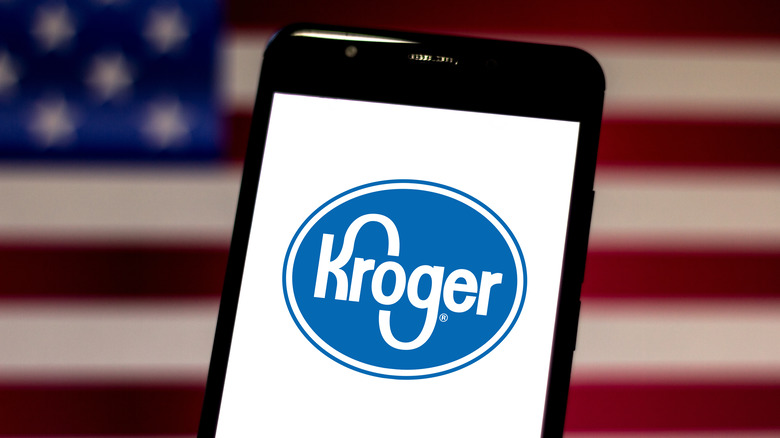The Complete Guide to Grocery App Development: Team Structure and Cost
In the ever-changing digital landscape, mobile applications have become an essential part of our daily lives. Grocery apps, among other app categories, have experienced a substantial increase in popularity, particularly in recent years. The ease of ordering groceries from the comfort of one’s own home has resulted in an increased need for well-designed and efficient shopping apps. Creating such an application necessitates a qualified team with different knowledge.

In this detailed tutorial, we’ll look at the key jobs in a grocery app development team, as well as their responsibilities and prices.
Project Manager
The Project Manager leads the project from conception to launch and beyond. Their responsibilities include planning, budgeting, communicating, and ensuring deadlines are met. The project manager plays an important role in overseeing the entire development process. Their tasks include project planning, resource allocation, risk management, and ensuring that the project is completed within the timeframe and budget. A project manager serves as a liaison between the development team and the client, ensuring clear communication and comprehension of project specifications.
Android Developers
The grocery app’s Android version is created by Android developers. They should be familiar with programming languages such as Java or Kotlin, as well as a thorough understanding of the Android ecosystem. Android developers strive to provide a fluid and user-friendly experience for Android device users, assuring compatibility with a variety of screen sizes and resolutions.
iOS Developers
iOS developers, on the other hand, focus on developing the grocery app for the iOS platform. Proficiency in Objective-C or Swift essential for iOS development.These developers work to optimize the app for Apple devices, making sure it satisfies Apple’s design and functionality criteria for a seamless user experience on iPhones and iPads.
UI/UX Designers
The app’s designer created a logical and visually appealing interface that makes exploring the shopping aisles enjoyable rather than a burden.UI/UX designers create the grocery app’s visual and interaction aspects. They collaborate closely with developers to design a user interface that is not only visually appealing, but also intuitive and user-friendly. UI designers focus on the app’s appearance and feel, whereas UX designers assure a smooth and gratifying user experience from onboarding to checkout.
QA Specialists
QA Specialists perform a critical role in ensuring the final product is free of bugs and functions as intended. They thoroughly test the supermarket app, detecting and reporting any flaws to the developer team. Functional, usability, and compatibility testing are all performed by QA specialists on various devices and platforms.
Backend Developer
The grocery app’s server side is the responsibility of the backend developer. They manage data storage, server communication, and business logic implementation. Programming skills in Node.js, Python, or Ruby are required. The backend developer makes sure the software runs well by maintaining the server infrastructure and processing data securely.

Team Collaboration and Workflow
Effective communication and coordination among team members are essential to the success of a grocery app development project. Regular meetings, updates, and feedback sessions help ensure that everyone is on the same page Issues are resolved immediately.
The normal workflow involves the following:
Requirement Gathering: The project manager works with the customer to collect detailed needs, such as features, design preferences, and any special functionalities.
Design Phase: UI/UX designers build wireframes and prototypes while working with the client and developers to finalize the app’s design.
Development: Android and iOS developers collaborate to build the app based on the final design. The backend developer builds the necessary server infrastructure.
Testing: Quality assurance specialists do extensive testing to discover and resolve any flaws or issues. This phase combines manual and automated testing.
Deployment: After testing and approval, the software is published to the appropriate app stores (Google Play for Android and Apple software Store for iOS).
Maintenance and updates: After the app goes live, the team will continue to monitor its performance and address any issues that may occur. In addition, continuing maintenance includes regular updates and feature additions.
Estimating the Cost
The cost of developing a supermarket app is determined by a number of factors, including feature complexity, team size, and geographical location. Here’s the breakdown of prospective costs:
Project Manager: The cost of a project manager varies depending on their experience and location. On average, project managers charge between $50 and $150 per hour.
Android and iOS Developers: Development costs are determined by the hourly rate of the developers. Rates might range between $30 and $100 per hour, depending on the developer’s skill and location.
UI/UX Designers: UI/UX Designers may charge between $30 and $80 per hour. The complexity of the design and the number of screens influence the overall design cost.
QA Specialists: They normally charge between $25 and $60 per hour. The amount of testing required and the complexity of the software affect QA costs.
Backend Developer: Backend developers’ hourly compensation ranges between $40 and $100. The complexity of server architecture and data handling has an impact on backend development expenses.
Basic Grocery App: $20,000 to $50,000. • Feature-Rich Grocery App: $50,000 to $150,000. • Advanced Grocery App (Instacart-like): $150,000–$500,000+
Tips for Budget-conscious Builders:
- Begin with a Minimum Viable Product (MVP): Launch a rudimentary version of the app with core features first, then gather user feedback and iterate to meet their demands.
• Consider Open-Source Solutions: Wherever practical, use ready-made components and libraries to decrease development time and expenses. - Negotiate Developer Rates: Compare quotes from several agencies and freelancers to discover the best deal for your money.
Technology Stack: Building the Backbone
Beyond the platform (Android, iOS, or both), the technological stack you choose will determine the performance and scalability of your app. Popular options include:
Backend languages: Backend languages like as Node.js, Python, PHP, and Java provide powerful and adaptable server-side development solutions.
Databases: Databases such as MongoDB, PostgreSQL, and MySQL provide for efficient storage and retrieval of product information, user accounts, and order details.
Cloud Platforms: Amazon Web Services, Google Cloud Platform, and Microsoft Azure provide scalable and secure cloud infrastructure to host your app and data.
Third-party APIs: Use APIs for payment gateways, logistical services, mapping services, and analytics tools to improve functionality and user experience.
Marketing & User Acquisition
The journey does not end when you have built your app. Attract users and establish a devoted community by:
Application Store Optimization (ASO): Stand out in app stores by optimizing your app listing with relevant keywords and engaging pictures.
Social media marketing: Social media marketing entails engaging with your target audience via focused content, influencer alliances, and social media campaigns.
Referral Programs: Encourage existing users to spread the word by providing discounts or rewards for successful referrals.
Public relations and partnerships: Work with local businesses, grocery stores, or delivery services to create cross-promotional opportunities.
Content marketing: Use entertaining blog entries, recipes, and grocery suggestions to generate organic traffic and promote your app as a resource.

Case Studies, Success Stories:
Learn from established players in the grocery app landscape:
Instacart: Instacart pioneered the on-demand grocery delivery model, emphasizing speed, convenience, and personalized recommendations.
BigBasket: BigBasket is India’s leading retailer, offering broad product options, reasonable pricing, and fast delivery networks.
Peapod: A well-established player in the United States, focusing on high-quality organic and specialized items with a strong emphasis on customer service.
Conclusion
Creating a grocery app necessitates a cohesive team with various expertise. The project manager, Android and iOS developers, UI/UX designers, QA specialists, and backend developers all help to ensure the successful delivery of a high-quality program. Effective teamwork, regular communication, and a well-organized workflow are essential for fulfilling project deadlines and maintaining customer satisfaction.
While development costs vary, accurate cost estimating requires a good grasp of the project scope and requirements. Businesses that invest in a talented and experienced development team can build a powerful and user-friendly supermarket app that fits the needs of today’s tech-savvy consumers.

